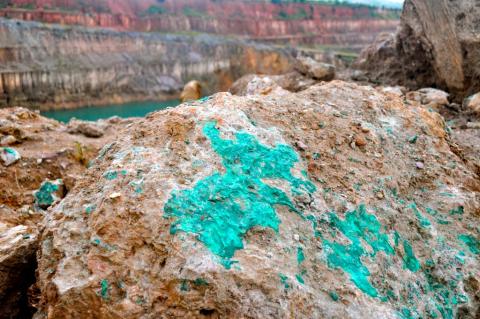
Can the extractives help Sierra Leone recover from a crisis?
Can the extractives help Sierra Leone recover from a crisis?
In 2014, Sierra Leone has had to face the triple whammy of Ebola, falling commodity prices and declining investment. Its latest EITI report covering 2013 shows that their revenues for the oil, gas and mining sector before the crisis was already low, although the contribution to the economy grew from 1% in 2011 to 2.6% in 2013. Extractive sector revenue increased by roughly 45 % since 2011. Mining sector royalties was the main source of revenue from the sector, which constituted 62% of sector revenue.
Sierra Leone faced challenges in publishing their report due to the Ebola crisis in 2014; ongoing mining sector operations were halted and exploration activities and sector growth were slowed down. Several of the companies required to report were either no longer operating in the country or had closed their offices in the country, making it challenging for Sierra Leone EITI to have published their latest report.
Although the report covers payments made in 2013, aspects of the information provided are forward-looking. In addition to disclosing information on the sector’s contribution to the economy and the relevant legal and fiscal frameworks, license and payment data, the report includes production and export data such as volumes and values from 2010-2014. More than 90% of total exports in 2014 came from minerals, and roughly half of these were from iron ore. The report also provides recommendations for how to improve governance of the sector, such as stabilising fiscal terms for companies and streamlining revenue collection.
Sustainability of the mining sector
Iron ore projects are seen as key contributors to Sierra Leone’s GDP growth, with over USD 1 billion in exports in 2013. This has created expectations about the potential of the mining sector to contribute to development, as the sector is currently creating opportunities for increased employment and government income. The report notes the future challenges related to the sustainability of the mining sector activities and the closure of mines for employment. While the iron ore deposits are large and there are ongoing mining and exploration activities, extractive revenues have until now appeared to be sustainable. However, lower commodity prices may undermine future revenues from the sector.
The figure below (from the EITI Report) shows the fluctuations of iron price development from 2010-2015. Iron ore prices dropped to below USD 150 per ton in 2013. Price recovery was short lived resulting in a further slump to USD 70 by the end of 2013, and the decline of international prices of iron ore resulted in slowed GDP growth in 2014.
Improving transparency through administrative reforms and online systems
Sierra Leone’s electronic public administration system has improved transparency and raised revenue.The Government of Sierra Leone has reformed the administration of its mining sector by implementing an electronic mining cadaster system. Government revenue from the sector has increased, regulation of the sector has become more consistent and efficient, and stakeholders now have access to timely and accurate data. The system has been used to compile EITI data since 2013. Read more about how Sierra Leone achieved this.
Image: EITI Progress Report 2016
The government has also recently developed a directory of resource contracts, administered by the National Minerals Agency.
Read the Sierra Leone 2013 Report
For more information about extractive transparency in Sierra Leone, see SLEITI’s website or visit the country page on eiti.org.
Related content



